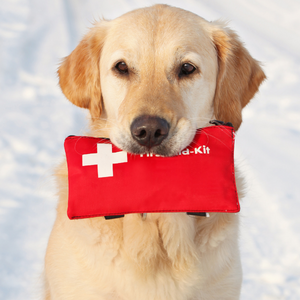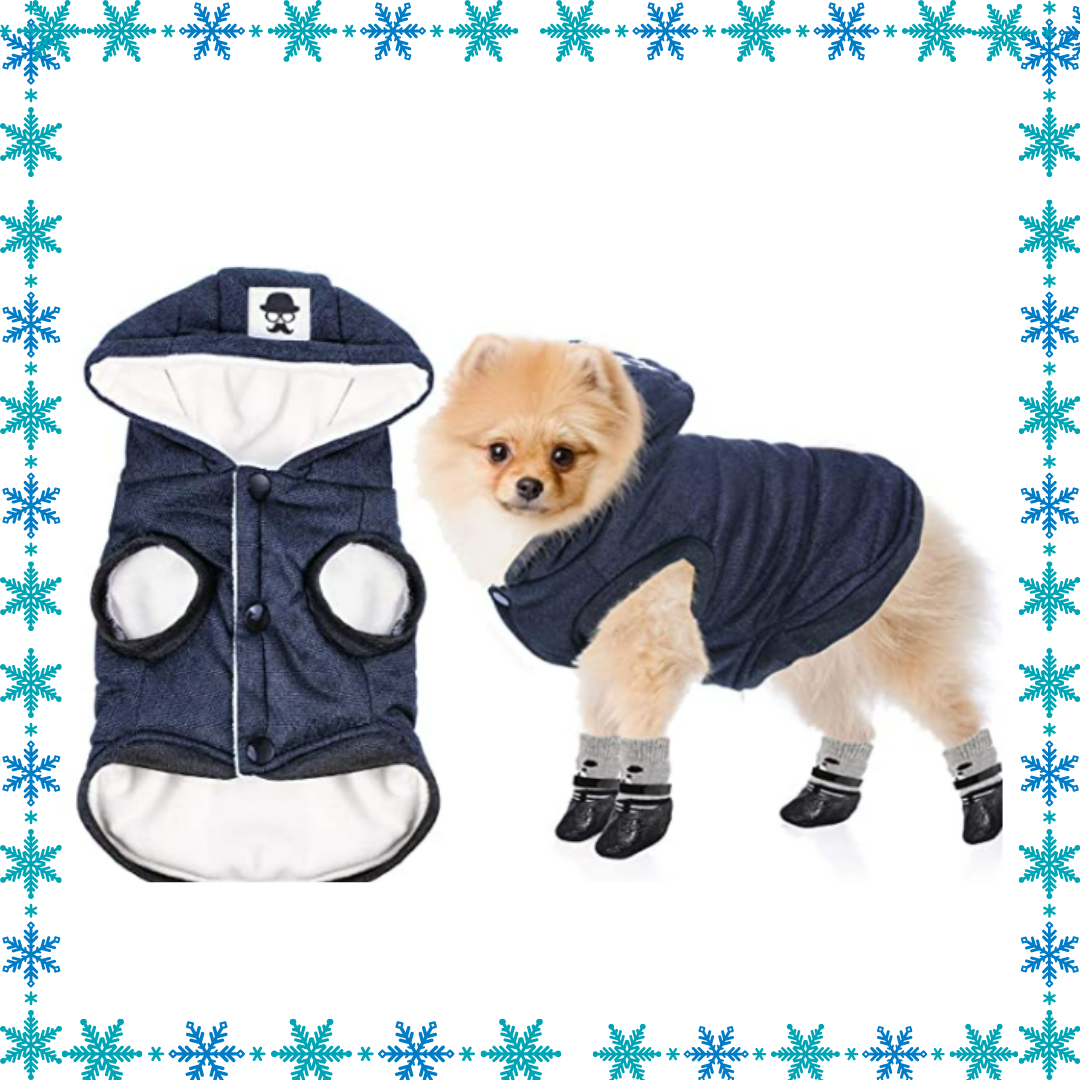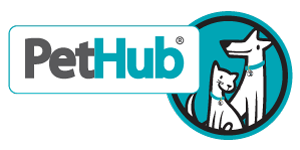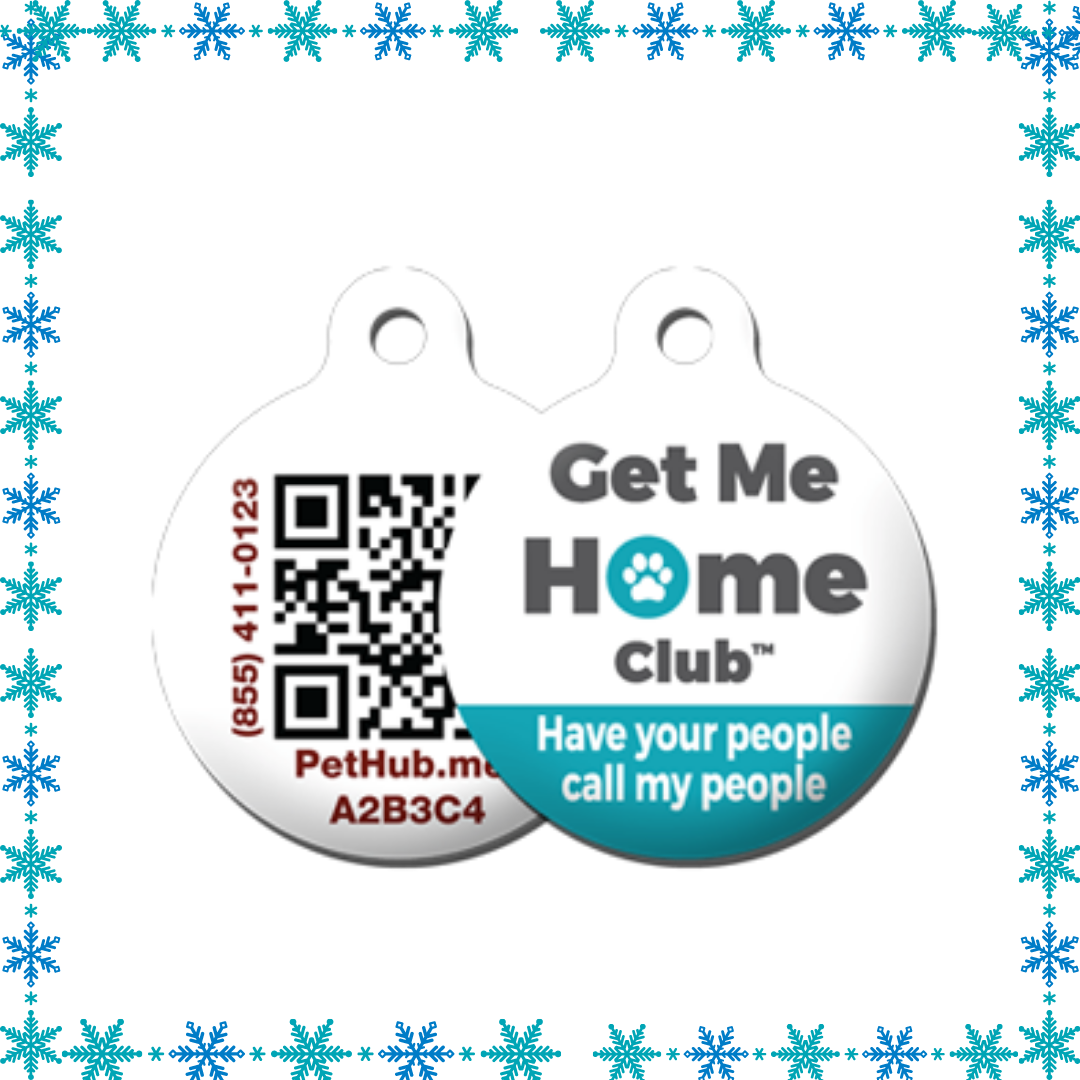The holidays are a busy time of year, whether you live in the middle of the hustle and bustle of the city or are a suburban family decking the halls to reflect the spirit of the season, it's important to protect your pets to keep them out of harm's way. After all, it is our mission at PetHub to ensure your pets stay safe, happy and home for the rest of their lives.

In the middle of holiday festivities, it’s easy to accidently overlook your furry friends and fail to keep an adequate eye on your pet's activities. Whether it’s the cat running out of the front door as the Christmas tree is coming in or the dog that’s determined to explore the plastic reindeer on the lawn down the street; the holidays are one of the prime seasons for lost pet issues to occur.
Unfortunately, in the United States, many major holidays fall during the winter months. By Halloween, temperatures are already dipping down into a range that may be unsafe for your pet. While your pet may be somewhat acclimated to the weather, especially if you live in an area that sees a lot of snow, hypothermia and exposure are severe threats that can turn fatal in a relatively short period of time.
Be aware of the cold
If you put your pet outside, even for just for 15 minutes, it's important to make sure they are adequately warm and their body is protected from frostbite, a common condition that impacts thousands of dogs during winter months, every year. And, while frostbite is not usually a life-threatening condition alone, it can often lead to hypothermia, which can be fatal.
A period of bad weather may be as life threatening to an animal, as a small child who’s become lost and unable to find adequate shelter but there are ways to help prevent weather related ailments and death, including pet clothing.

A high quality set from Kurgo is an excellent, all-encompassing option for cats and small dogs who spend time in winter weather, even if it's just short winter walks.
This large coat from Doglay is an excellent option for your larger dogs.
.png?IXMjm6hQJiZkQ2RW7Au1IG28DbH2Fsvy) Indoor Hazards
Indoor Hazards
Of course, there are dangers that lurk inside the home, as well. Your indoor pet may not realize that eating mistletoe or poinsettias that decorate the interior of your home will end up in a trip to the emergency room. In addition, a number of common plants that bloom during various holiday seasons can be fatal to your four-legged friends, including: azaleas, ivy, oleander, and Easter lilies. Be sure to keep these types of plants out of the home.
One reason many people love the holiday seasons is that it’s an excuse for friends, family, and feasting to take center stage. While it’s tempting, and perfectly okay, to give your pet an extra treat here and there, overdoing it can give him more than a stomach ache. And, chocolate toxicity from scraps of dessert can present a serious danger, particularly in dogs that are underweight, sensitive to different types of foods, or struggle to maintain a healthy blood sugar.
.png?9uUWvxlL6.13rhZzBUYq5B5eQMPE0vsQ)
Too often, people will feed unwanted food to the family dog. And if you own a Labrador Retriever, German Shepherd, or other large dog, he’s unlikely to turn down a single morsel, even if he’s already full. Unfortunately, these larger dogs are subject to a painful and fatal disease called “bloat” where the stomach becomes twisted. This condition can require surgery and, in most cases, it is necessary to have the animal put to sleep to spare him further pain. Although there’s no way to prevent bloat from happening, and virtually anything can cause the disease in breeds that are predisposed to the illness, food consumption is one of the leading factors.
If your dog eats too much food in a short period of time, gulps it down with air and water, or simply doesn’t know his limits, this can increase the chances of bloat and other serious intestinal disorders from occurring. The larger the dog, the more voracious the appetite, and many will simply keep eating past the point where the stomach is full. Take extra precautions when feeding your pet scraps of “people food,” and make sure the holiday ham, turkey, pie, and other homemade goodies are safely out of reach of even the most determined pet. Be sure to have pet insurance as well, and PetHub can help you
find the best plan for you and your pet!
How to keep pets safe if they get out
For lost pets, potential dangers can lurk around the corner. In order to keep your pet safe, it’s important to make sure that he is up-to-date on his vaccinations and wears a
collar and
ID tags at all times.
It can be tempting to cut your furry friend some slack and remove these items from time to time, but if the day you remove the collar happens to be the same day your pet darts out the front door and gets lost in the snow, you may have a terribly dangerous situation on your hands.
Make sure that your pet’s ID tags are made of durable material, and engraved with his name, your contact info, and any medical conditions such as asthma, diabetes, or allergies that a potential rescuer would need to know about right away. PetHub offers
unique and technologically advanced tags, that allow anyone to scan the unique QR code on the tag, and immediately pull up the pet’s profile page. When a pet goes missing, the owner simply put ups an alert on the profile page and PetHub's 24/7 U.S. based call center is ready to connect lost pet parents with anyone who finds your pet and scans their unique tag. You can also check out
Whistle, a pet monitor with the ability to track your pet's health and location!
This allows for anyone who finds your lost pet to help bring that pet home, so they don’t have to take their pet to the veterinarian or shelter to get their microchips scanned.
Nonetheless, microchipping is invaluable, because if your pet can't return home immediately, a shelter, clinic, or veterinarian’s office is a warm and safe place for your lost furry friend to be. And, with a microchip, the owner can be identified and contacted immediately. If this doesn’t happen, many shelters put animals up for adoption within three days of arrival at the facility.
With all to be thankful for during the holiday season, be sure to take time out to be thankful for the furry creatures that complete your family. A little extra work in keeping them safe and sound goes a long way.
.png?9uUWvxlL6.13rhZzBUYq5B5eQMPE0vsQ) Too often, people will feed unwanted food to the family dog. And if you own a Labrador Retriever, German Shepherd, or other large dog, he’s unlikely to turn down a single morsel, even if he’s already full. Unfortunately, these larger dogs are subject to a painful and fatal disease called “bloat” where the stomach becomes twisted. This condition can require surgery and, in most cases, it is necessary to have the animal put to sleep to spare him further pain. Although there’s no way to prevent bloat from happening, and virtually anything can cause the disease in breeds that are predisposed to the illness, food consumption is one of the leading factors.
Too often, people will feed unwanted food to the family dog. And if you own a Labrador Retriever, German Shepherd, or other large dog, he’s unlikely to turn down a single morsel, even if he’s already full. Unfortunately, these larger dogs are subject to a painful and fatal disease called “bloat” where the stomach becomes twisted. This condition can require surgery and, in most cases, it is necessary to have the animal put to sleep to spare him further pain. Although there’s no way to prevent bloat from happening, and virtually anything can cause the disease in breeds that are predisposed to the illness, food consumption is one of the leading factors.




.png?IXMjm6hQJiZkQ2RW7Au1IG28DbH2Fsvy)
